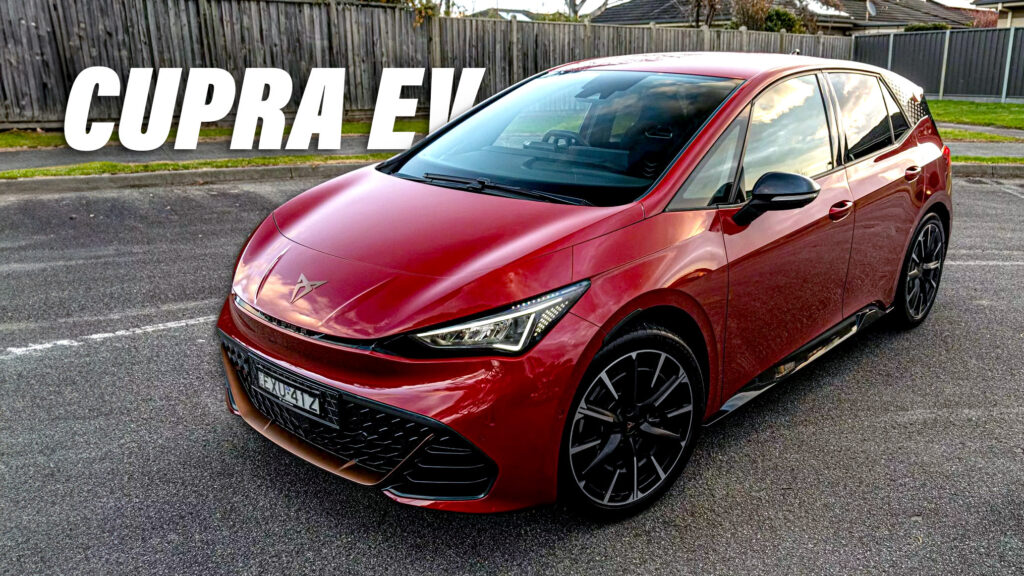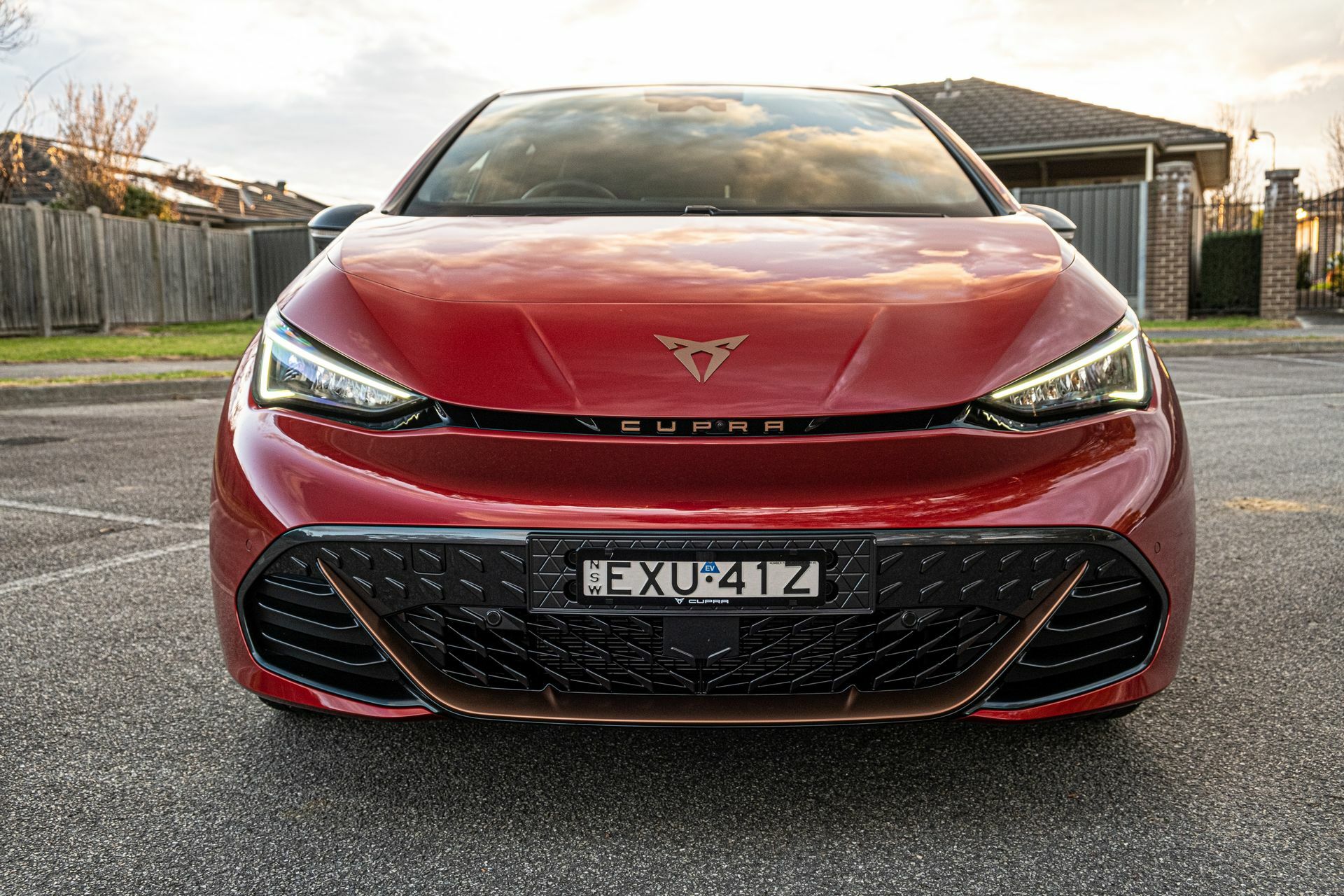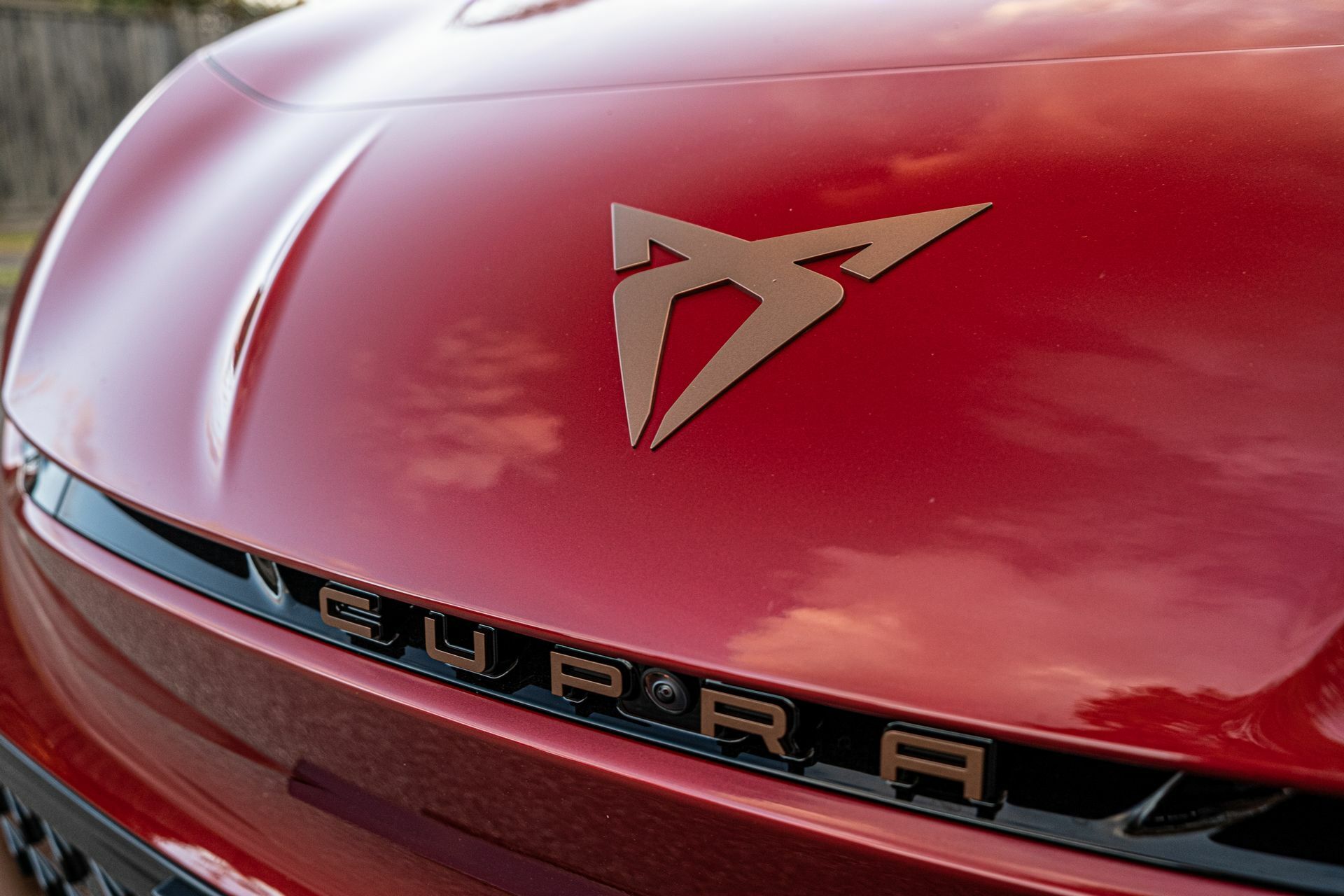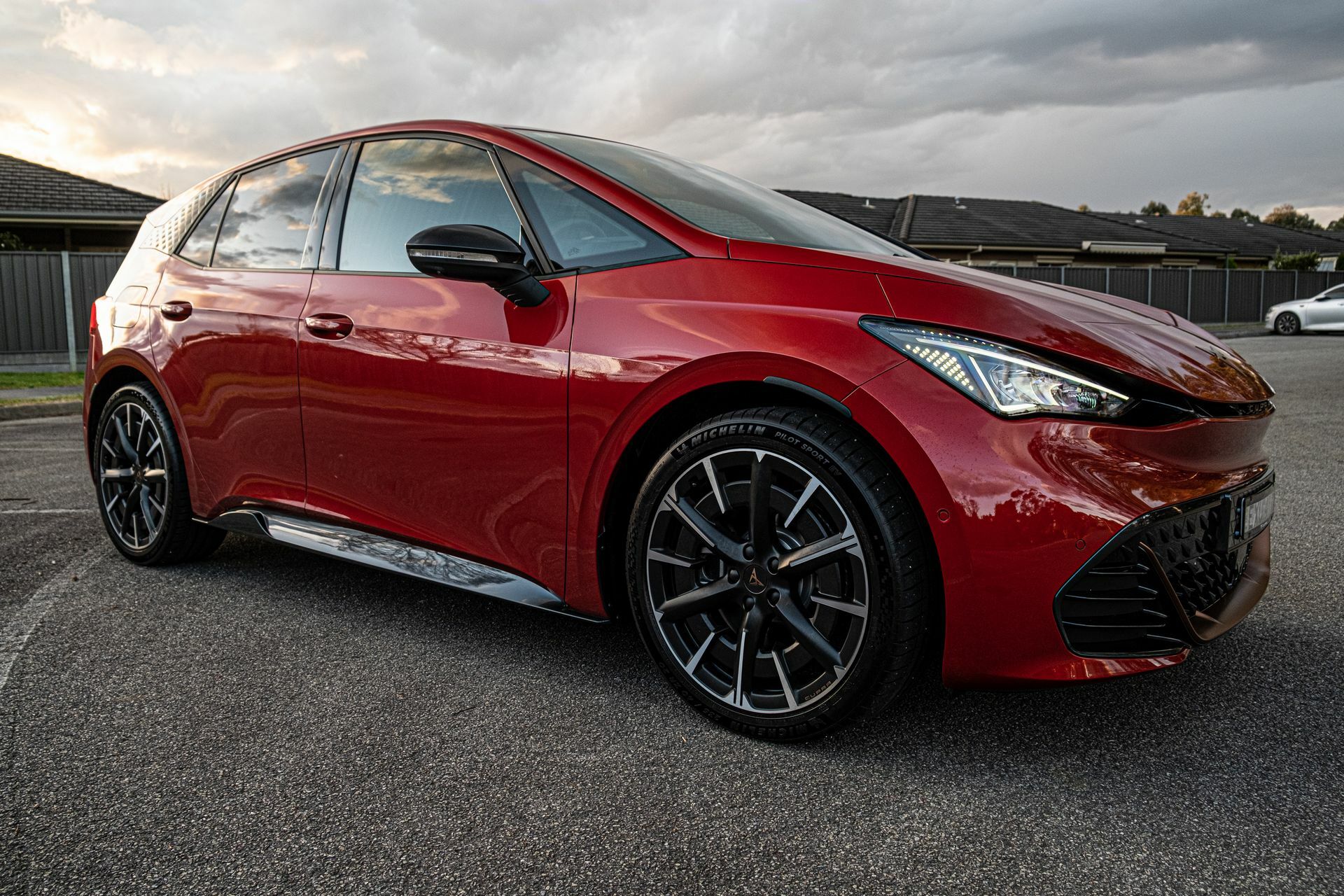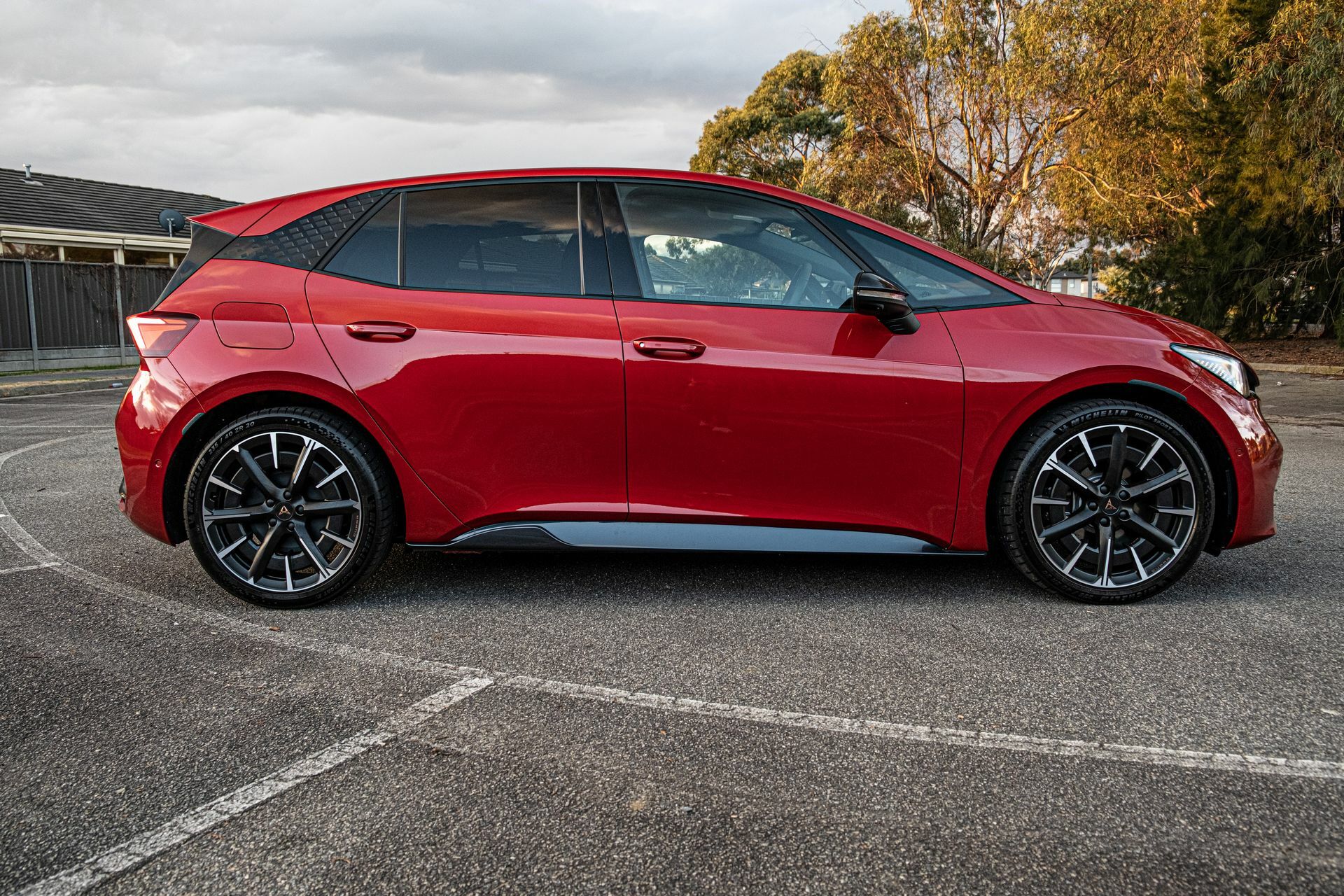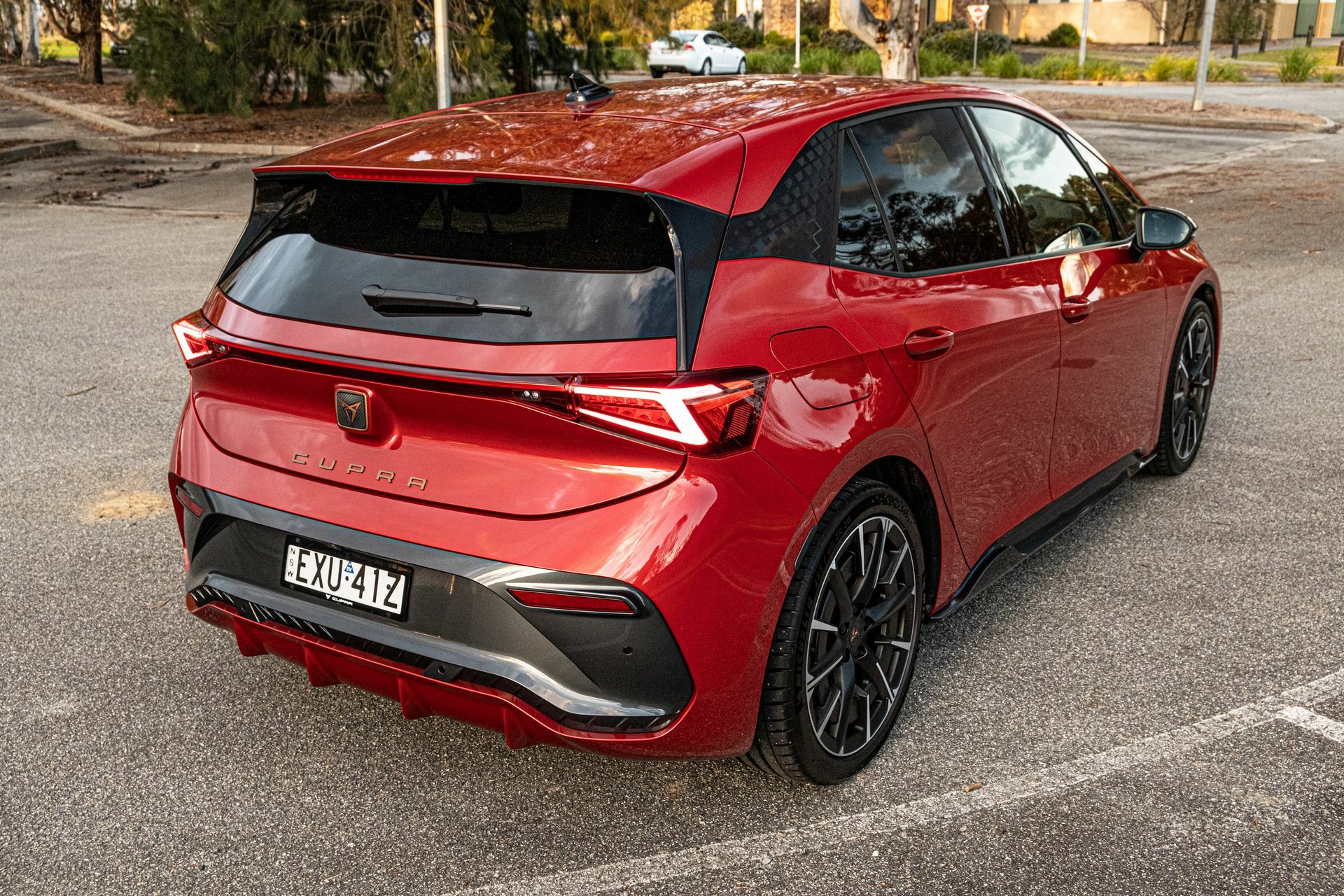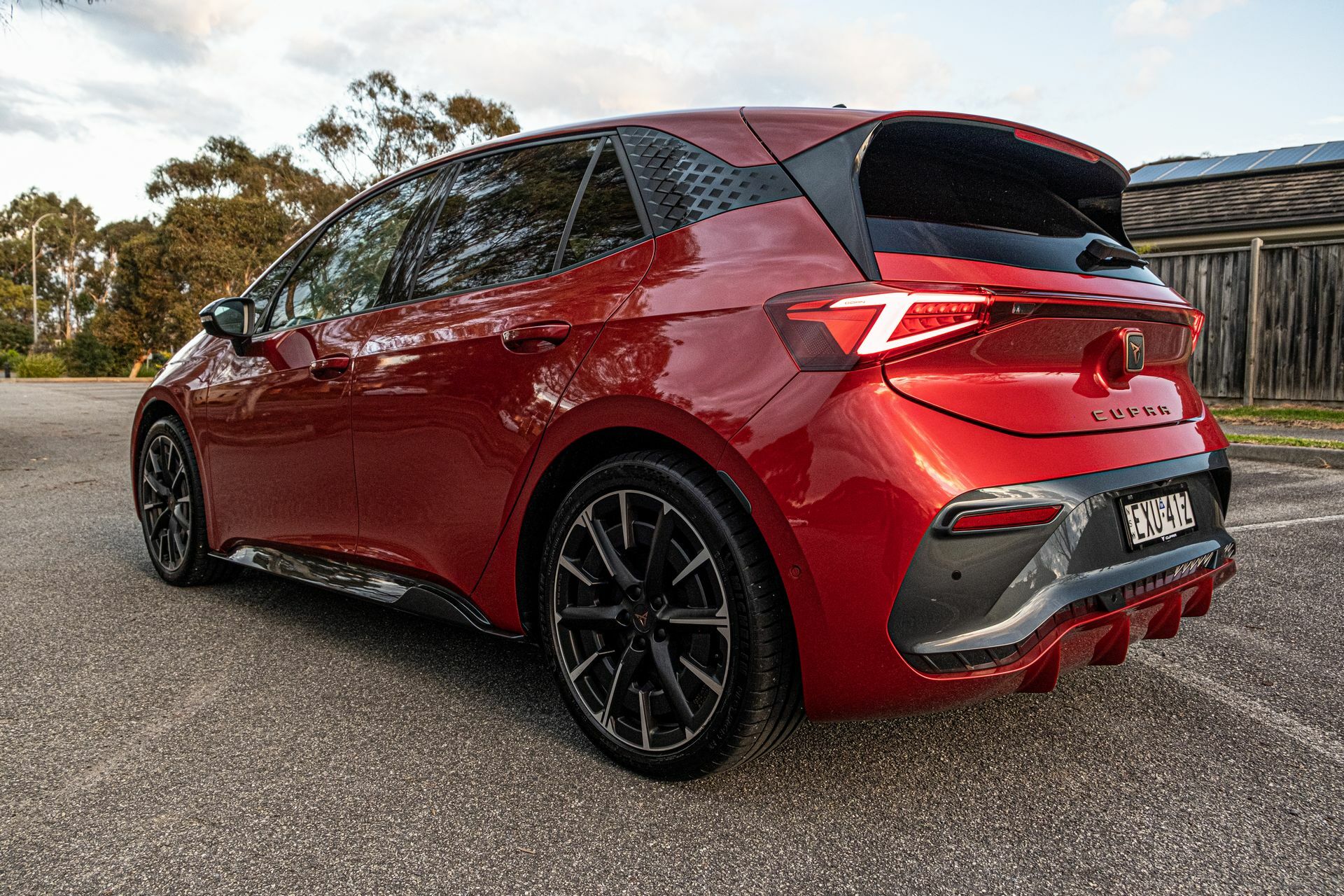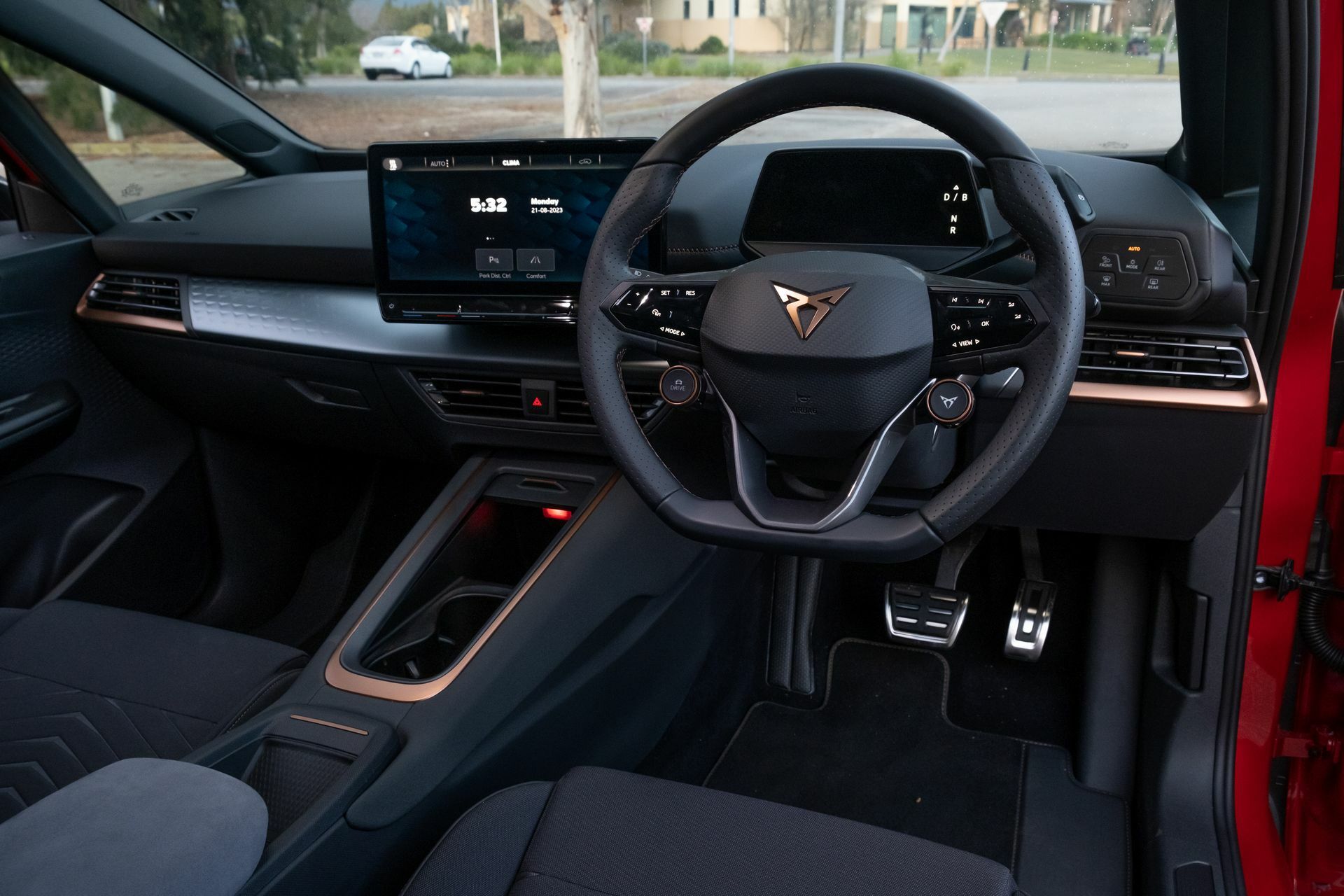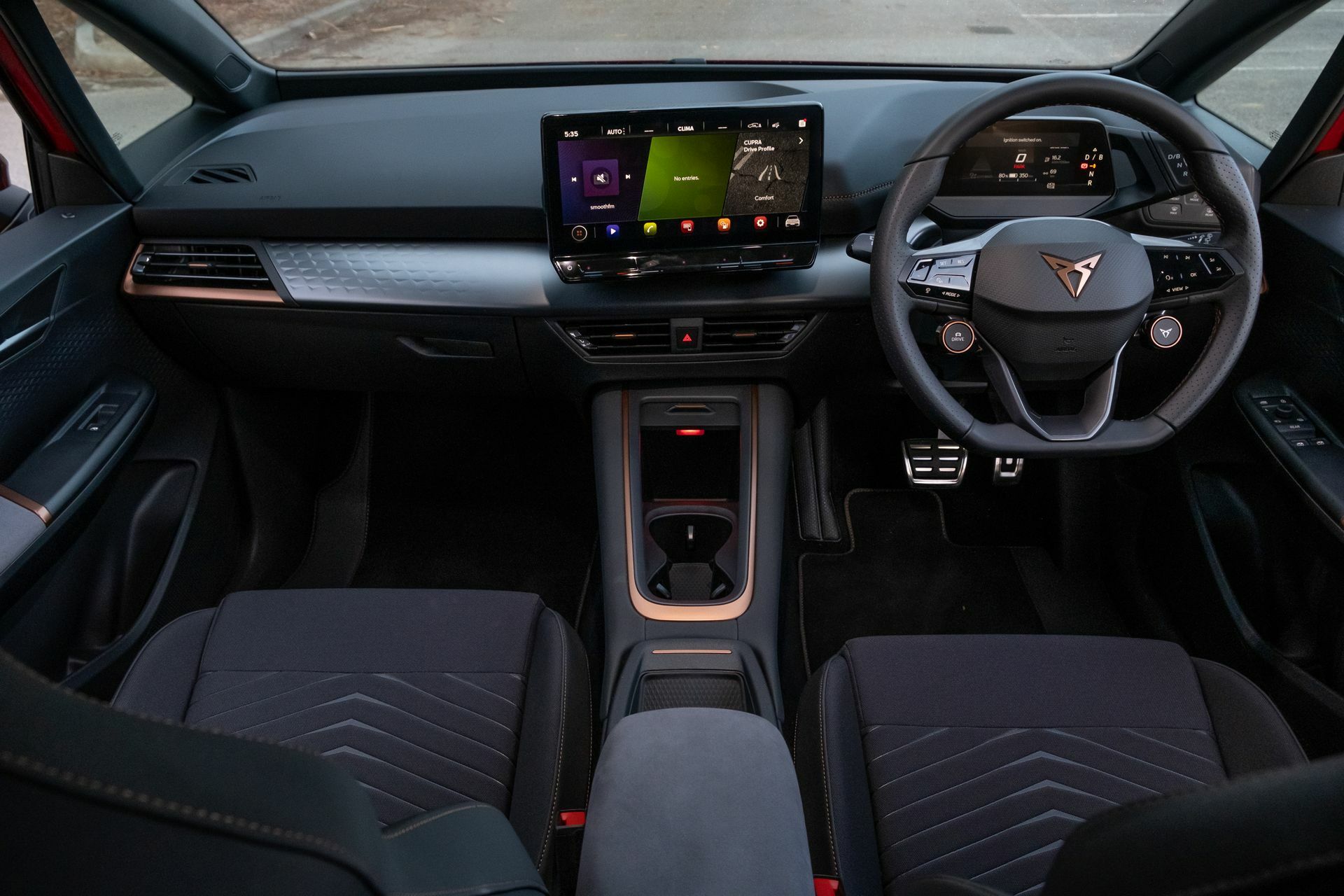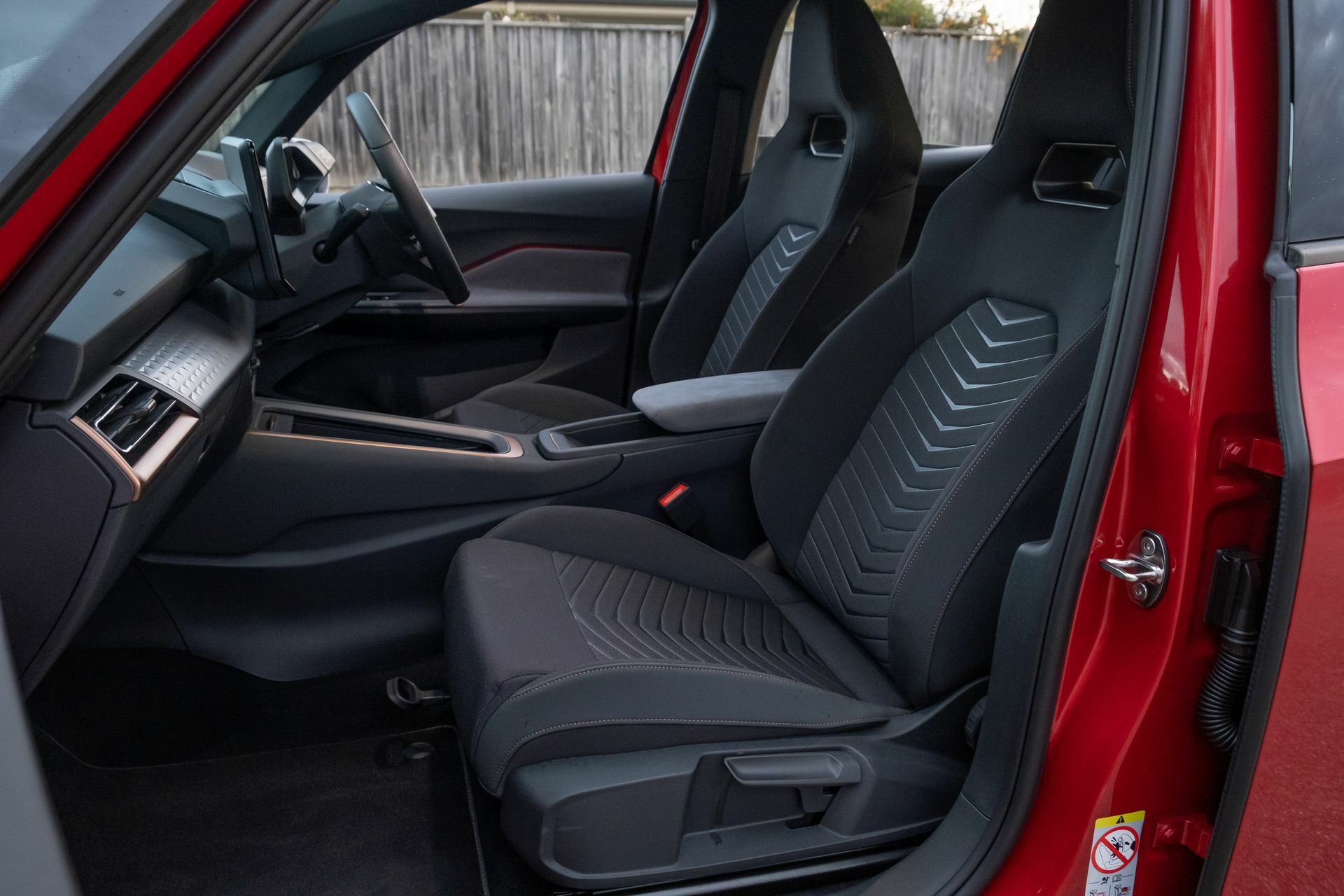Until five years ago, Cupra was the performance sub-brand of Seat. It was best known as building some of the market’s punchiest hot hatches and roughly a decade ago, claimed the title as building the fastest front-wheel drive hot hatch to ever lap the Nurburgring. Things have changed a lot for Cupra since the 2010s.
In 2018, the VW Group made the ambitious move to spin off the Cupra name into its own brand. At the time, this seemed like an ill-fated move that was doomed for failure but it has proven to be a masterstroke. In fact, the Cupra brand has been so well received by the market that last year it sold 152,900 vehicles and enjoyed sales increases of 92.7% over 2021. By comparison, Seat’s sales plummeted by 40.5% to 232,700 units last year. Cupra is now the fastest-growing carmaker in Europe and moving forward, Seat will shift focus away from producing cars to creating different mobility solutions.
Perhaps one of the key reasons why Cupra is doing so well is its designs and its youthful exuberance. This is no more apparent than with the all-electric Cupra Born, based around the ho-hum VW ID.3 but made to look so much more dramatic and already proving to be popular among shoppers looking for a solid electric hatchback. We recently spent a week with one to see what it is all about.
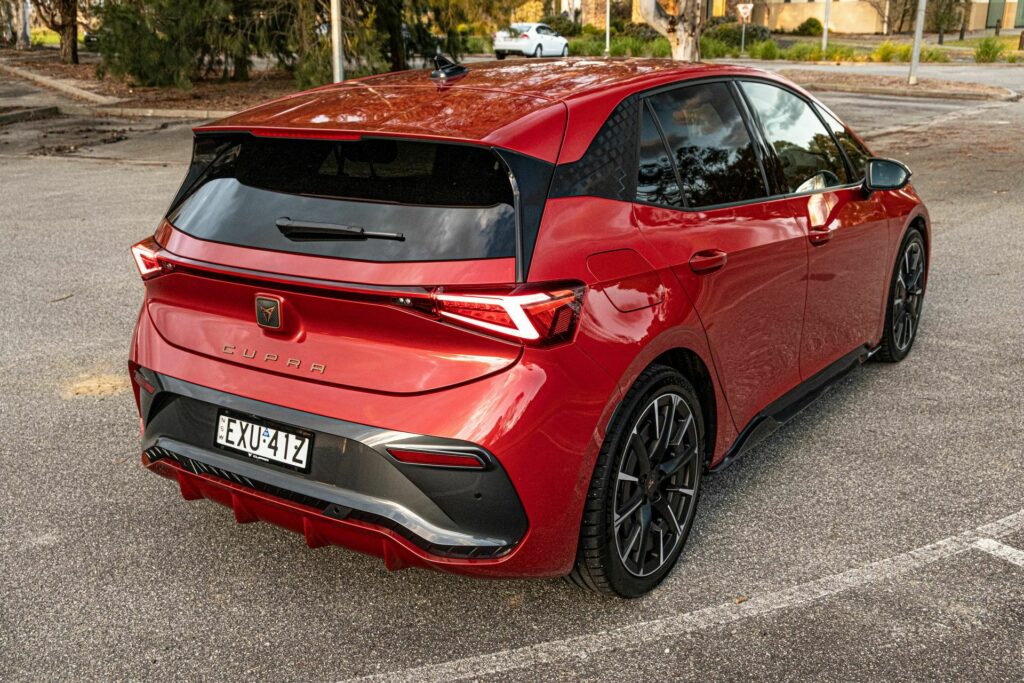
What do you get for your money?
The Cupra Born launched in Australia last year carrying a sticker price of AU$59,990 ($37,874) before on-road costs. For a hatchback, that may seem like quite a lot of money and it is. But, it’s not excessive. Australia’s electric vehicle market remains relatively small and there are very few alternatives costing less than AU$60,000 that don’t come from either BYD or MG.
One of the Cupra Born’s nearest rivals is the Tesla Model 3. Facelifted 2024 Model 3s have yet to touch down on Aussie shores but will do so shortly, starting at a very competitive $61,900 ($39,080). Yes, the Tesla is a sedan whereas the Born is a hatchback but there will definitely be some cross-shopping between the pair.
Read: Cupra Born EV Spied, Looks Like It’s Getting An Early Facelift
All Cupra Born models sold locally come outfitted with a 77 kWh battery pack driving a single electric motor at the rear axle with 170 kW (228 hp) and 310 Nm (229 lb-ft) of torque. These are sold figures and put the Born within striking distance of the VW Golf GTI with its 180 kW (241 hp) and 370 Nm (273 lb-ft) but of course, the Golf is front-wheel drive.
Cupra asserts that the Born is good for 511 km (317 miles) on a charge. It also supports DC fast-charging of up to 170 kW and the brand says it’ll average 17 kWh/100 km during everyday driving. As we discovered, it is quite easy to beat that figure.
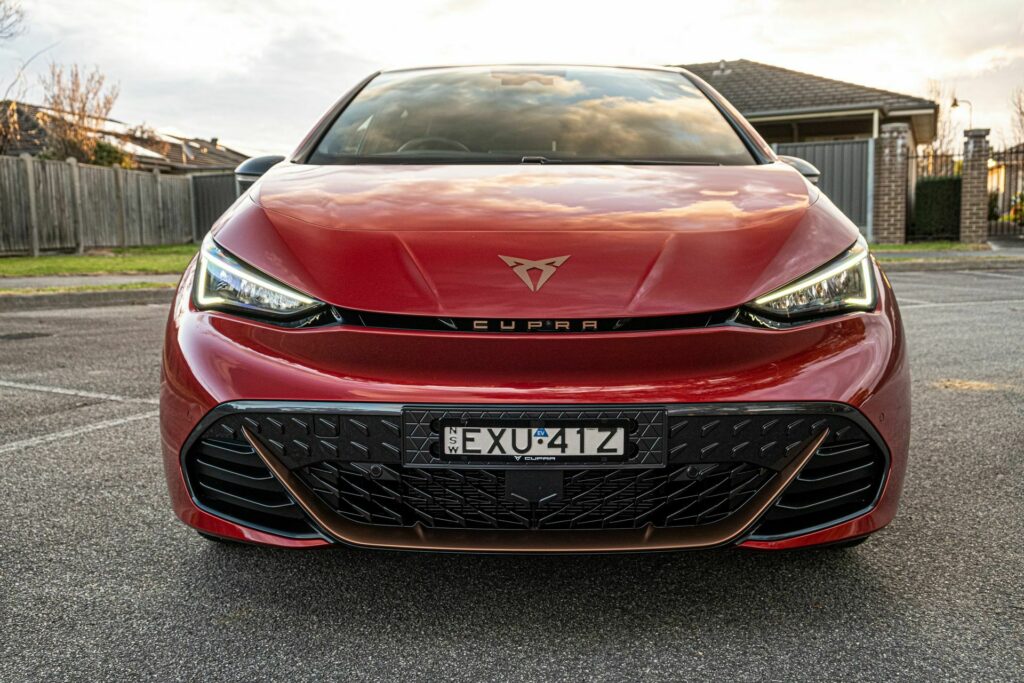
Sharp looks
Upon laying eyes on the Cupra Born for the first time, I was surprised that it is larger than images would have you believe. At 4,324 mm (170.2 inches) long, 1,809 mm (71.2 inches) wide, 1,540 mm (60.6 inches) tall, and rocking a 2,766 mm (108.9-inch) wheelbase, it is slightly longer, wider, and taller than an Mk8 VW Golf. I was also taken aback by just how much glass the Born has, primarily thanks to the presence of angular glass panels positioned ahead of the wing mirrors.
Overall, the Cupra Born is quite an impressive car to look at, particularly when painted red and complete with bronze highlights like our press car had. It looks mean and purposeful, providing it with a personality not found in some other EVs on the market. This is particularly evident when you look at it from the front where the large black grille grabs your attention, as do the sharp headlights, the dynamic lines on the hood, and the large Cupra badge, also with a bronze finish.
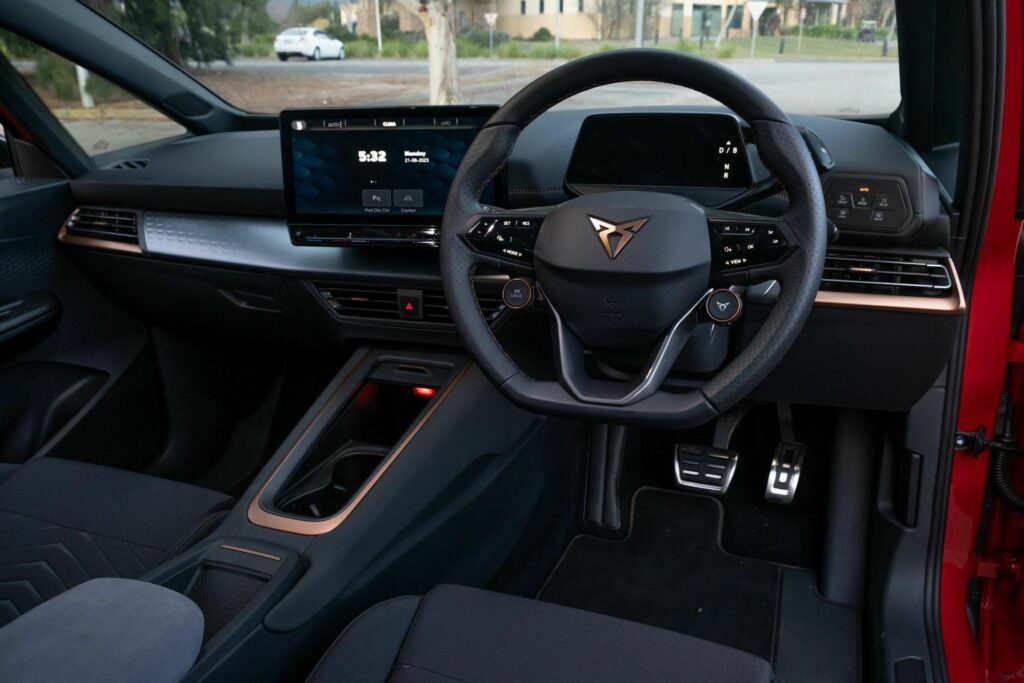
A cabin with style and tech
The interior is a little less overt but it is equally as fun. The sporty steering wheel looks absolutely fabulous and feels superb in the hands with comfortable notches in the 9 and 3 position as well as two physical buttons for the Drive and Cupra mode selectors. The touch panels used on the rest of the steering wheel that are finished in piano black are not so nice and are easy to accidentally hit.
Positioned immediately behind the steering wheel is a small 5.3-inch digital instrument cluster. While this display is not located on the dashboard like most other cars on sale, it displays all the vital driving information you could want, like speed, navigation, range, and current efficiency figures.
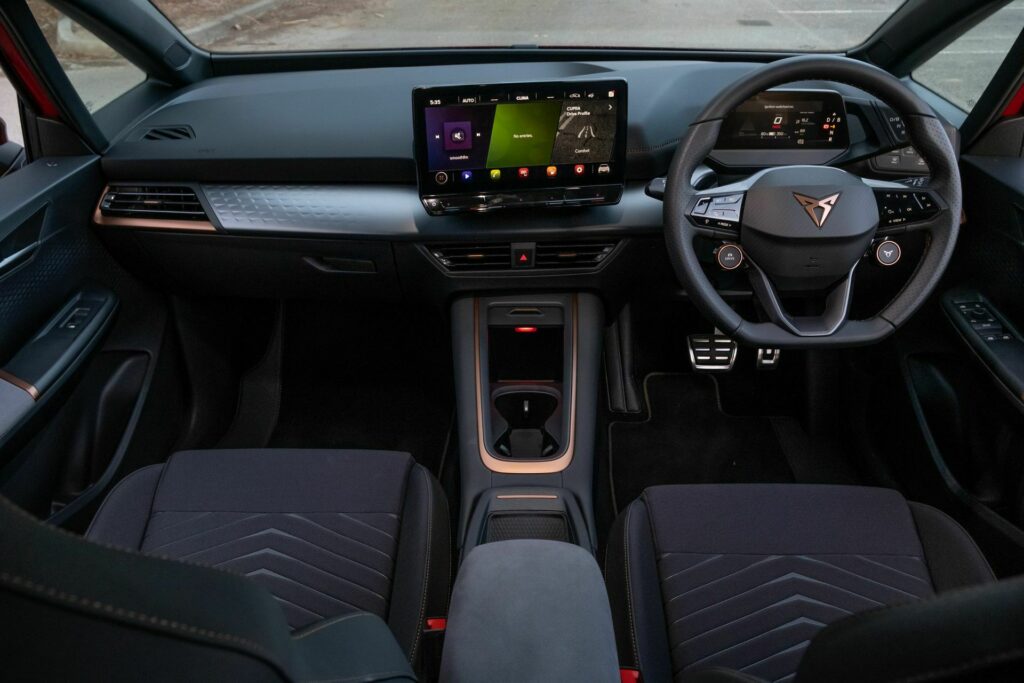
The carmaker’s playful touches continue throughout the rest of the cabin where there is an abundance of bronze elements and a lovely mixture of materials. These range from a silver plastic trim running across the dashboard to soft-touch leather on the dashboard and a suede-like material on parts of the doors. The seats of the Born have been created using Seaqual Yarn, a recycled polymer fiber from plastic waste extracted from the Mediterranean Sea that is very soft and a nice alternative to typical cloth or leather.
Read: Why Cupra Turned To Race Car Drivers To Develop The All-Electric Born
Sitting atop the dashboard is a large 12.0-inch infotainment display where most of the vehicle’s controls are housed. The UI takes a bit of getting used to due to the variety of different menus and display settings but after a couple of days with the Born, we got used to it. The system also supports wired Apple CarPlay and Android Auto. Located beneath this screen is a small touch panel for controlling the temperature and the volume. While there’s no learning curve, it can be frustrating to use, particularly on the move. We would have preferred physical buttons or knobs but so is the way nowadays.
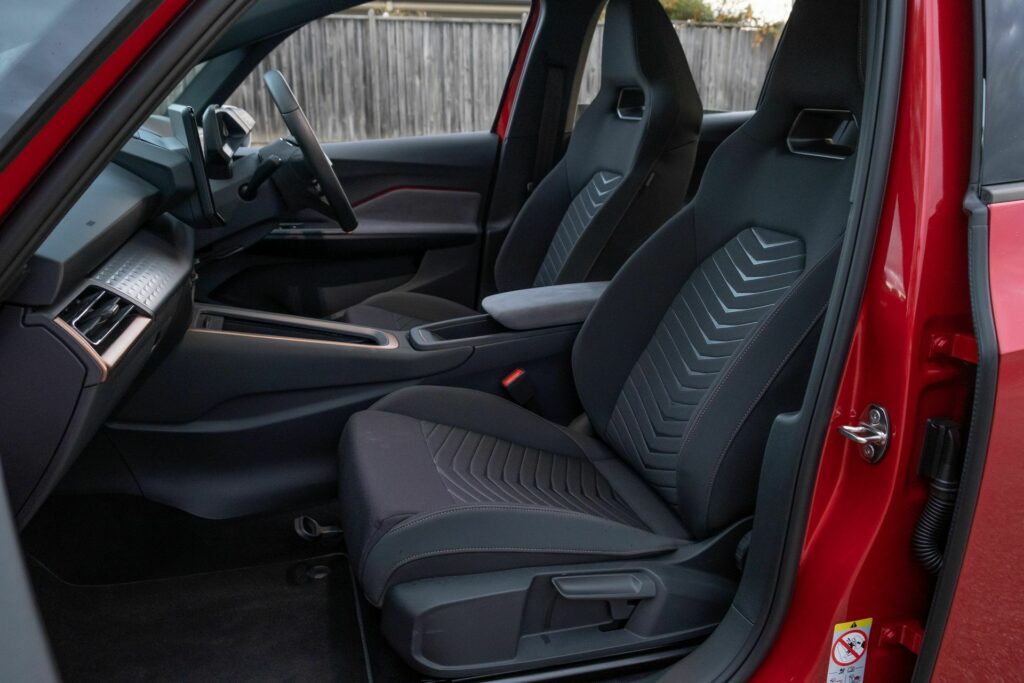
The Born also has an annoying habit of playing a chime every time you touch one of the buttons on the steering wheel. This includes a chime each time you press volume up or volume down.
Cupra has equipped the Born with most of the safety systems you would expect. These include autonomous emergency braking, a 360-degree camera, adaptive cruise control, and rear cross-traffic alert. However, the VW Group’s Travel Assist system, a semi-autonomous highway driving assistant with lane-centering, is not present, which is a shame.
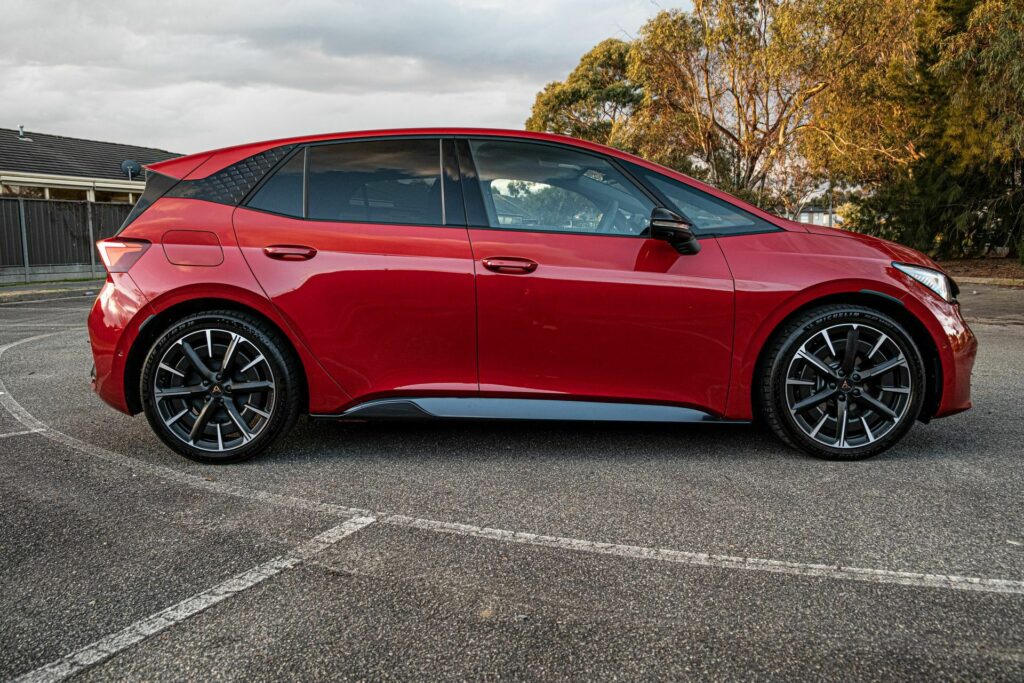
Smooth sailing
We didn’t really know what to expect when driving the Cupra Born. Would it feel like a rear-wheel drive hot hatch or like a run-of-the-mill hatchback with some spritely performance? The answer is somewhere in the middle. It feels much like a warm hatch, albeit one that is electric.
Cupra says the Born can hit 100 km/h (62 mph) in 7 seconds and we recorded times to match those claims. The Born pulls particularly well off the line, capable of hitting 50 km/h (31 mph) in just 2.8 seconds and while the speed does start to taper off after that, it continues to pull strongly.
There’s little sense of the Born being rear-wheel drive so prospective customers looking to send it sideways around corners will be disappointed. Tipping the scales at 1,960 kg (4,321 lbs), it simply doesn’t have the grunt needed to light up the rear wheels. However, the implementation of rear-wheel drive does contribute to a front end that feels particularly light and responsive, meaning the Born is loads of fun on corner entry. It also hides its weight very well thanks to the grippy Michelin Pilot Sport EV tires measuring 235/40 at all four corners.
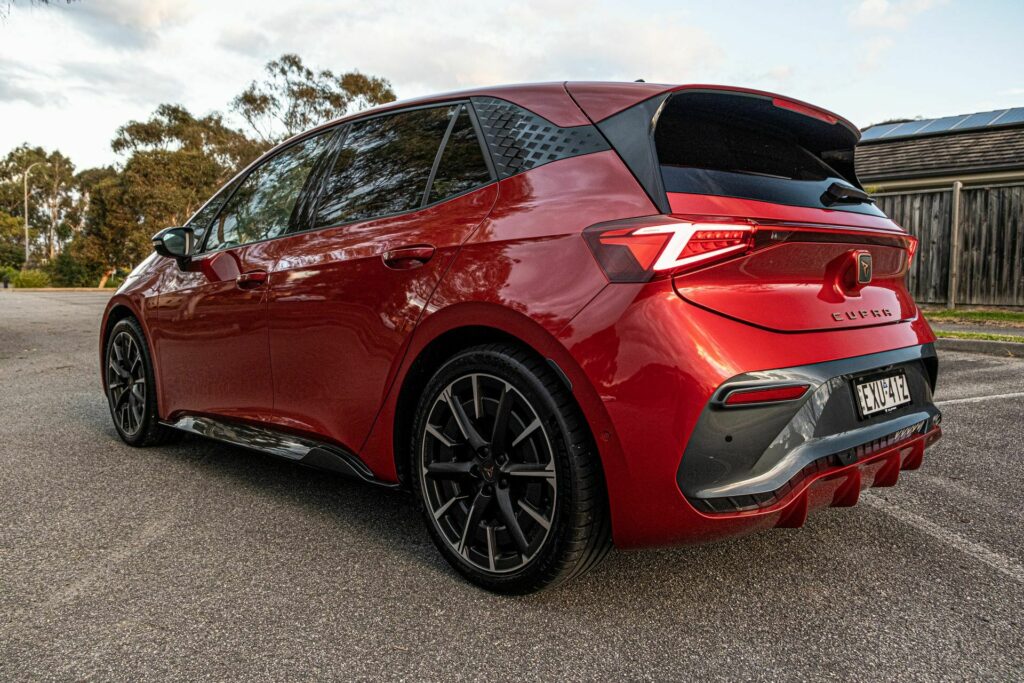
The Born’s steering does lack some of the feel found in other VW Group hot hatches but as far as EVs go, it performs well in this regard as it is nicely weighted and provides good feedback. The brakes are also nice and while we know some EV shoppers have been rubbed the wrong way by the presence of drum brakes at the rear, they have no adverse impact on the driving experience.
Read: Cupra Raval Lands In Munich As An Edgier Take On The Volkswagen ID. 2
The Born does not have a one-pedal driving mode like many other EVs and regenerative braking is triggered by toggling the shifter to B. The level of regeneration varies slightly between driving modes but it cannot be adjusted independently. That’s a shame but Cupra’s engineers have done a fine job of ensuring the transition between the regen and the mechanical brakes is imperceptible through the pedal.
Efficiency is solid. As mentioned, Cupra quotes 17 kWh/100 km but we were able to comfortably achieve 15 kWh/100 km when driving in a relaxed and controlled manner. Have a little too much fun and that figure climbs to around 21 kWh/100 km.
If only it was a little cheaper…
Overall, the Cupra Born is a very good EV. It’s plenty of fun to drive, is spacious, looks good, and offers decent efficiency. However, it is tough to recommend it over the likes of the Tesla Model 3, the impending BYD Seal priced from AU$49,888 ($31,732), and the forthcoming Volvo EX30 set to start at AU$59,990 ($38,157).



